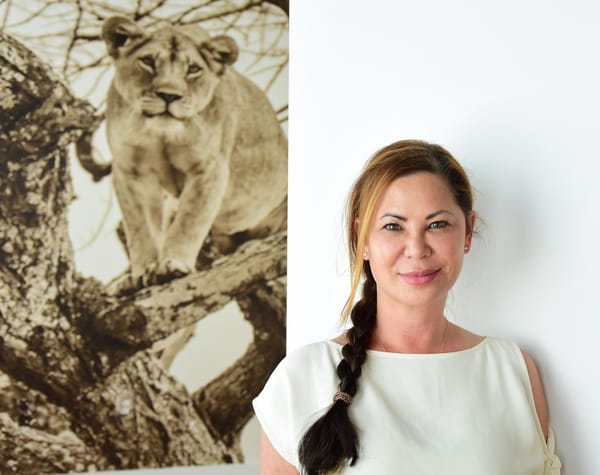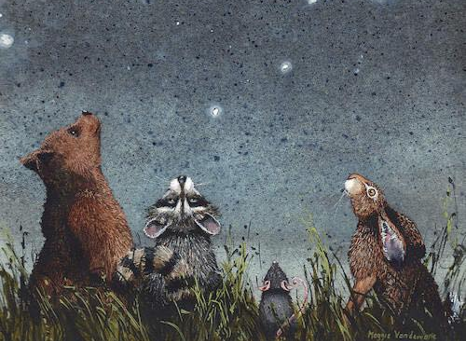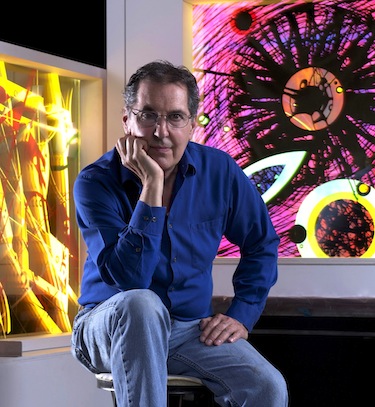
Portrait by Paul Rocheleau;
photos of the installation courtesy of Tom Patti Design
At age eight, Tom Patti lost the sight in his right eye when a spinning contraption he was building came apart and a sharp piece flew into his face. Perhaps because of that accident and how it affected the way he saw the world, Patti, the internationally acclaimed glass artist and Pittsfield native, seems particularly sensitive to the perspective—literal and metaphorical—of children. As he designed his new permanent installation for the Berkshire Museum, which will be unveiled at a preview gala on Friday evening, June 29, and revealed to the public on Saturday, he took into account the young people who visit the museum again and again, absorbing images and inspiration that will stay with them for a lifetime.
“It can be experienced by a child standing three feet high, and by an adult standing six feet high,” says Patti of his new installation. “They will see different things and have different experiences, but the opportunity exists for both of them. I think of a child like myself—coming back, growing, getting taller. They will see the work differently each time they come to the museum.” What exactly will they see? Even Van Shields, director of Berkshire Museum, hasn’t had a look at the finished work yet. “I’m looking forward to the surprise,” he says. While the three pieces that comprise the installation have been kept under wraps, they will undoubtedly share some of the characteristics of Patti’s work over the past 40 years. His small-scale sculptures and large-scale architectural installations—which are in the permanent collections of estimable art institutions around the world, including the Louvre in Paris, the Victoria and Albert Museum in London, and the Metropolitan Museum of Art and Museum of Modern Art in Manhattan—play with light, color, and form in striking and unexpected ways, often layering wedges, lines, and geometric shapes. The results are enigmatic and bewitching, evoking atmospheric moods and unfathomable depths.

Since 1993, Patti has worked out of a 5,500-square-foot studio on Federico Drive in Pittsfield; he and his wife, Marilyn, live in nearby Savoy, Massachusetts. Though the museum owns a few of his small works, and a Patti piece is featured at the Lichtenstein Center for the Arts in Pittsfield, this is his first major commission in Berkshire County. (Other commissions in the region include a six-paneled work for the Eric Carle Museum of Picture Book Art in Amherst; a wood and glass ark installed at Hevreh of Southern Berkshire in Great Barrington; and a set of double glass doors made for the Gund Gallery at the Museum of Fine Arts, Boston, in use until a recent renovation.) Patti’s installation will be the first and last thing that museum visitors will experience. The work is made up of three separate pieces: Velocity Echo is sited in the entranceway, while the two parts of Echoes in Space are in the lobby. Like much of Patti's recent work—including the glass panels in the rotunda of University of North Carolina’s School of Law at Chapel Hill and a 300-foot long frieze he designed for a corridor in the Owens-Corning international headquarters in Toledo, Ohio—they are seamlessly integrated into their environment, both architecturally and aesthetically. Former museum director Stuart Chase, who commissioned the work from Patti two years ago, first envisioned the project during the museum’s “A Wider Window” capital campaign from 2005 to 2008, which supported the first major renovation of the museum since 1936. Back then, as part of its upgrade, the museum commissioned Alexander Calder – then a Berkshire resident – to create work for the auditorium; the two mobiles he made (which were Calder’s first public commission) still hang there today.
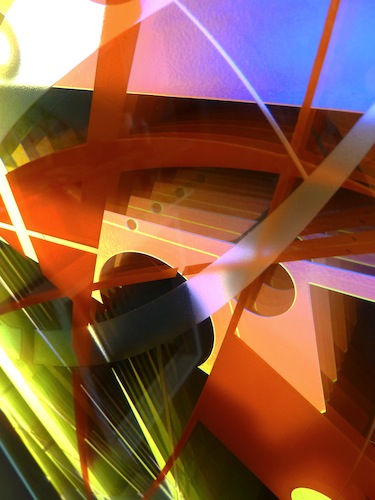
“I was reflecting on that last renovation, and thinking it was now time for the museum to again commission major works that will be here in perpetuity,” says Chase. “More and more, the museum produces exhibits and programs that integrate art and science, and Tom is the quintessential artist/engineer. He’s also someone who really appreciates the connection between the arts and the natural world.” That connection was nurtured early on at Berkshire Museum. Beginning at age seven or eight, Patti would spend hours wandering through its many galleries. One exhibit in particular sparked his imagination: a small room in which fluorescing minerals were displayed under a wavelength of light that brought out their colors. “It was quite magical the way these inanimate objects were suddenly animated with this mysterious light,” he recalls—words that could describe his own work. At 15, Patti took his first art class at the museum and was told he had “innate ability.” His early mentors included photographer Clemens Kalischer and the late Lenox gallery owner Ella Lerner, as well as Norman Rockwell, who saw Patti’s work at a Pittsfield Art League exhibit on the lawn in front of the Berkshire Atheneum, just around the corner from the museum. “I didn’t know who he was,” Patti says. “We had a conversation and, a few days later, he called and invited me and my parents to his home in Stockbridge.” On that visit, Rockwell recommended that Patti attend the Pratt Institute in Brooklyn—advice that Patti ultimately followed, earning a bachelor’s and master’s degree in industrial design. “Because Tom has always worked at the intersection of art, technology and industry, he is the embodiment of what we try to do as an organization,” says Shields, who has overseen the commission since succeeding Chase last fall. “We are really interested in connecting the dots—what is called interdisciplinary interpretation—as a way to illustrate how creativity and innovation happen. Tom’s art embeds our mission in form.” Trained as both an artist and engineer, Patti says his diverse inspirations range from architecture and design to astrophysics, microbiology, and cosmology. Known for his groundbreaking techniques, he spent the first 22 months after the commission developing the methods he would use to bring his vision to reality, and the last two months actually making it. “During all that time, I was investigating, searching, feeling, exploring, discovering what was possible,” he says.
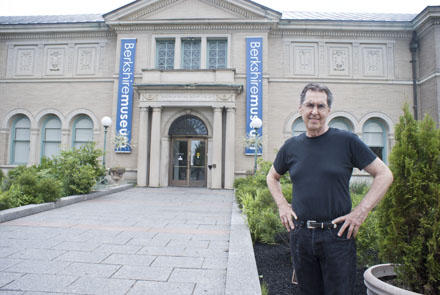
A companion show to the new work, also titled Echoes In Space, seeks to elucidate the artist’s process. Located in a second-floor gallery, the show includes videotaped interviews with Patti, samples of his earlier, related work, and some of the maquettes he used in developing the commission. “He works in such a unique way because he’s innovating so much with the medium,” says Maria Mingalone, the museum’s director of interpretation, who curated the exhibit. “It’s a way of thinking and seeing that only can happen using this material and using the kind of technology he’s developed in order to have a particular artistic expression that’s uniquely his own. The show unveils the mystery of that process.” Patti is clearly moved to have his work commissioned by and displayed in the very museum that was a powerful source of inspiration in his youth. “It’s a wonderful gesture and it has a lot of meaning to me,” he says. “It’s a legacy for my children and grandchildren, for my friends and their friends.” —Tresca WeinsteinTom Patti: A Gala Celebration Preview party for Patti’s new installation to raise funds for the museum’s education programs Friday, June 29, 6 p.m. Cocktails, dinner, live auction, music and dancing. Free Opening Day CelebrationSaturday, June 30, 10 a.m. – 5 p.m. Free admission all day, with a scavenger hunt for kids Artist talk at 11 a.m.; book-signing at noon Cake and lemonade will be served at 1 p.m.


